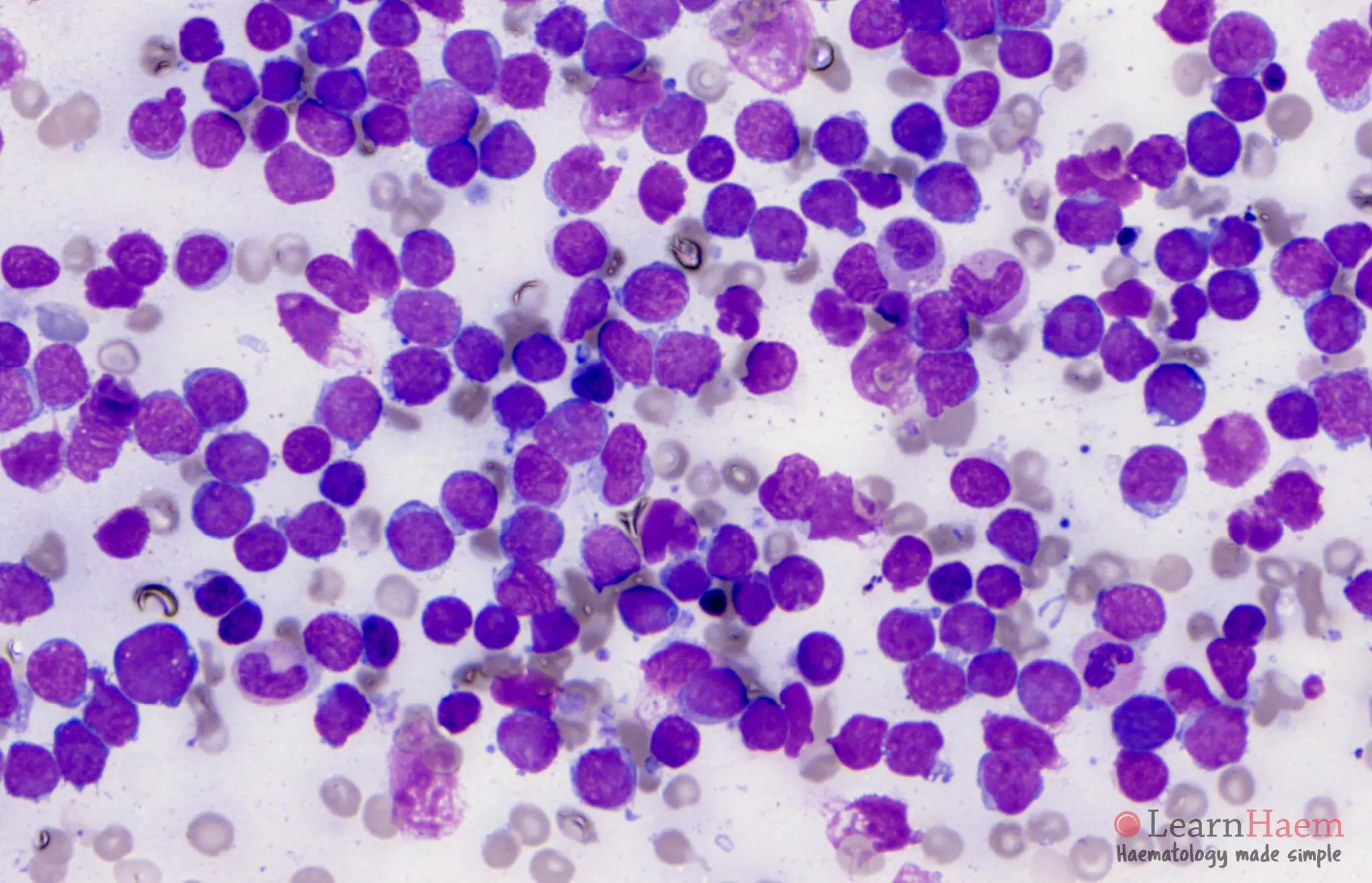Physical Address
304 North Cardinal St.
Dorchester Center, MA 02124

Acute leukemia is a rapidly progressing cancer that affects the blood and bone marrow. It is characterized by the rapid production of immature cells that crowd out healthy blood cells.
Acute leukemia requires immediate treatment as it can become life-threatening if left untreated. We will explore the causes, symptoms, diagnosis, and treatment options for acute leukemia. We will also discuss the importance of early detection and the prognosis for patients with this condition.
By understanding the key aspects of acute leukemia, individuals can make informed decisions and seek appropriate medical care.
Acute Leukemia, a form of blood cancer, requires understanding and awareness for effective treatment. This condition involves the rapid production of abnormal white blood cells, impacting the body’s ability to fight infections and causing fatigue, bleeding, and other symptoms. Early detection and comprehensive care are crucial in managing acute leukemia.
Acute leukemia is a type of cancer that affects the blood and bone marrow. It is characterized by the rapid and uncontrolled growth of immature blood cells, known as blasts. These abnormal cells prevent the normal production of healthy blood cells, which can lead to serious health complications. Acute leukemia is classified into two main types: acute lymphoblastic leukemia (ALL) and acute myeloid leukemia (AML). Let’s dive deeper into each of these types to better understand acute leukemia.
Types Of Acute Leukemia:
ALL primarily affects lymphoid cells, which are responsible for producing white blood cells that help the body fight infection. It is the most common type of leukemia in children, but it can also occur in adults. ALL progresses rapidly and requires immediate treatment. Without prompt intervention, it can quickly spread to other organs and tissues. Some common symptoms of ALL include fatigue, frequent infections, easy bruising or bleeding, bone pain, and enlarged lymph nodes. Early detection and specialized treatment are crucial in improving the prognosis for individuals with ALL.
AML, on the other hand, affects myeloid cells, which are involved in the production of red blood cells, white blood cells, and platelets. It is most commonly diagnosed in older adults; however, it can occur in people of any age. AML progresses rapidly and can cause severe symptoms such as anemia, fatigue, bleeding, frequent infections, and organ enlargement. Prompt diagnosis and tailored treatment approaches play a vital role in managing AML and improving patient outcomes.
Understanding the different types of acute leukemia is crucial in identifying the appropriate treatment options. By differentiating between ALL and AML, healthcare professionals can provide personalized care to individuals with acute leukemia. Early detection, accurate diagnosis, and effective treatment are essential in improving the prognosis and quality of life for those affected by this aggressive form of cancer.
Survival rates for individuals diagnosed with acute leukemia can vary based on several factors. Understanding these factors is essential to gaining insight into a patient’s prognosis and guiding treatment decisions. Age and Acute Leukemia, Genetic Factors, and Response to Treatment are some of the key considerations that impact survival rates.
Age plays a crucial role in determining the survival rates of individuals with acute leukemia. Generally, younger patients tend to have a better outcome compared to older ones. Studies have shown that children and young adults have a higher chance of achieving complete remission and long-term survival.
As we age, both the risk of developing acute leukemia and the challenges involved in treating it increase. Older individuals often have additional health issues and a weaker immune system, making it harder to tolerate aggressive treatments. These factors contribute to lower survival rates.
Genetic factors also impact the prognosis of acute leukemia. Certain chromosomal abnormalities, such as translocations or mutations, can affect the behavior of leukemia cells and their response to treatment. For instance, individuals with specific genetic alterations may have a more favorable prognosis, while others may face a more aggressive form of the disease.
Furthermore, the subtype of acute leukemia itself – whether it is acute lymphoblastic leukemia (ALL) or acute myeloid leukemia (AML) – influences survival rates. Each subtype has unique genetic characteristics and responds differently to treatments, ultimately affecting the overall prognosis.
The response to treatment is a crucial factor in determining individual survival rates. Patients who achieve complete remission, meaning no leukemia cells are detectable in their bone marrow, have a higher chance of long-term survival.
Effective treatment options for acute leukemia include chemotherapy, radiation therapy, stem cell transplant, and targeted therapies. The choice of treatment depends on factors such as the patient’s overall health, subtype of leukemia, and genetic profile. Not all patients respond equally to these therapies, emphasizing the importance of personalized approaches.
In summary, age, genetic factors, and response to treatment are significant considerations impacting survival rates in acute leukemia patients. Understanding these factors empowers healthcare providers to make informed decisions regarding treatment plans, while also offering patients and their families a better understanding of what to expect throughout their journey.
When it comes to treating acute leukemia, innovative approaches to treatment are continuously being explored and developed. While traditional treatments such as chemotherapy and radiation therapy remain important options, there are also newer and more targeted treatment approaches that are showing promising results. These innovative treatment approaches include targeted therapies, immunotherapy, and stem cell transplantation. Let’s take a closer look at each of these approaches.
Targeted therapies are designed to specifically target and attack cancer cells while minimizing damage to healthy cells. They work by blocking the growth and spread of cancer cells or by causing them to self-destruct. One example of a targeted therapy is tyrosine kinase inhibitors (TKIs). These drugs work by blocking specific enzymes that are needed for the growth and survival of cancer cells. By targeting these enzymes, TKIs can help slow down or stop the progression of acute leukemia. Some common TKIs used in the treatment of acute leukemia include imatinib, dasatinib, and nilotinib.
Another targeted therapy approach is monoclonal antibodies. These are laboratory-produced proteins that can recognize and bind to specific proteins on the surface of cancer cells. By binding to these proteins, monoclonal antibodies can trigger an immune response or deliver drugs directly to the cancer cells. In the case of acute leukemia, monoclonal antibodies like rituximab and alemtuzumab have been used to target and destroy leukemia cells.
Immunotherapy is an innovative treatment approach that harnesses the power of the body’s immune system to fight cancer. It works by boosting the immune response or by using immune cells or substances to directly attack cancer cells. One type of immunotherapy that has shown promise in treating acute leukemia is chimeric antigen receptor (CAR) T-cell therapy. CAR T-cell therapy involves genetically modifying a patient’s own white blood cells to produce special receptors that can recognize and attack leukemia cells. These modified T-cells are then infused back into the patient’s body to seek out and destroy the cancer cells.
Another type of immunotherapy called checkpoint inhibitors is also being studied in the treatment of acute leukemia. Checkpoint inhibitors work by blocking certain proteins on immune cells, allowing the immune system to recognize and attack cancer cells more effectively. This can help boost the body’s natural defenses against acute leukemia.
Stem cell transplantation, also known as bone marrow transplantation, is a procedure that involves replacing damaged or diseased bone marrow with healthy stem cells. Stem cells are immature cells that can develop into different types of blood cells, including red blood cells, white blood cells, and platelets. In the case of acute leukemia, stem cell transplantation can be a potentially curative treatment option.
There are two main types of stem cell transplantation: autologous and allogeneic. Autologous stem cell transplantation involves using the patient’s own stem cells, which are collected and stored before high-dose chemotherapy or radiation therapy. Once the high-dose treatment is complete, the stored stem cells are infused back into the patient’s body to restore the bone marrow function.
On the other hand, allogeneic stem cell transplantation involves using stem cells from a donor, usually a close genetic match. This procedure allows for the replacement of the patient’s diseased bone marrow with healthy donor cells. Allogeneic stem cell transplantation can provide a new immune system that can help fight off any remaining leukemia cells and prevent the disease from coming back.
In conclusion, innovative treatment approaches such as targeted therapies, immunotherapy, and stem cell transplantation are offering new hope in the fight against acute leukemia. These approaches are allowing for more effective and targeted treatments, minimizing side effects, and improving outcomes for patients. As research continues to advance, even more innovative treatment options may become available, bringing us closer to finding a cure for this challenging disease.

Credit: www.goodreads.com
When it comes to acute leukemia, improving quality of life is of utmost importance. The physical and emotional toll of this fast-growing cancer can be overwhelming for both patients and their loved ones. However, there are various approaches and strategies that can be implemented to provide support and help manage the side effects of treatment.
In the battle against acute leukemia, supportive care plays a vital role in enhancing the quality of life for patients. Offering a multidimensional approach, supportive care focuses on addressing the physical, emotional, and practical needs of individuals undergoing treatment.
Some key aspects of supportive care include:
Battling acute leukemia can take a toll on a person’s mental and emotional well-being. Therefore, psychological support plays a crucial role in improving the overall quality of life for patients.
By offering a supportive environment and interventions, psychological support aims to:
Treatment for acute leukemia can often result in various side effects, which can significantly impact a person’s quality of life. Proper management of these side effects is crucial to minimize discomfort and promote overall well-being.
Some management strategies for treatment side effects include:
Acute leukemia is an aggressive form of cancer that requires immediate attention and treatment. While the diagnosis can be daunting, there is hope for the future. Through advancements in research, early detection and prevention methods, and personalized medicine, the treatment outcomes for patients with acute leukemia are improving. Let’s explore these areas of progress in more detail.
Researchers and scientists worldwide are tirelessly working towards understanding the underlying causes of acute leukemia and developing more effective treatment strategies. They are uncovering critical information about the genetic and molecular changes that drive the progression of this disease. These findings have paved the way for targeted therapies, immunotherapies, and novel drug regimens.
One such breakthrough is the discovery of new specific biomarkers that help identify patients at high risk of relapse or resistance to standard treatments. These biomarkers allow doctors to personalize the treatment plan, leading to better outcomes. Additionally, ongoing clinical trials are evaluating promising drugs that specifically target the genetic mutations found in acute leukemia, offering new hope for patients whose disease does not respond to traditional therapies.
Early detection plays a crucial role in improving the prognosis of patients with acute leukemia. Medical professionals are continuously researching and refining screening methods to identify the disease in its earliest stages. This enables prompt intervention and increases the chances of successful treatment.
Furthermore, efforts are being made to implement preventive strategies that minimize the risk of developing acute leukemia. These prevention methods focus on eliminating or reducing exposure to known risk factors, such as certain chemicals or radiation, and promoting a healthy lifestyle that includes regular exercise, a balanced diet, and avoiding tobacco and excessive alcohol consumption.
Personalized medicine is revolutionizing the treatment of acute leukemia. Each patient’s genetic makeup and individual characteristics are taken into account to create a unique treatment plan. Through extensive molecular testing, doctors can identify specific genetic mutations driving the growth of leukemia cells. This information allows them to prescribe targeted therapies that directly attack the cancer cells while sparing healthy ones.
With advances in technology, such as Next-Generation Sequencing (NGS), it is now possible to analyze multiple genes simultaneously. This enhances the accuracy of diagnosis, facilitates the identification of mutations that may respond to targeted therapies, and enables regular monitoring of minimal residual disease (MRD) to assess treatment effectiveness and guide further interventions.
In conclusion, the future looks promising for patients battling acute leukemia. Advancements in research, early detection and prevention efforts, and personalized medicine are revolutionizing the way this aggressive cancer is both understood and treated. With continued investment in these areas, we can hope for even better outcomes and improved quality of life for those affected by this devastating disease.

Credit: cdtrp.ca

Credit: issuu.com
Yes, it is possible to fully recover from acute leukemia with proper treatment and care.
Acute leukemia is a serious condition that requires immediate medical attention. It is a form of cancer that progresses rapidly and can be life-threatening. Early detection and treatment increase the chances of survival. Prompt medical intervention is crucial for managing the condition effectively.
Acute leukemia can be curable with proper medical treatment and therapies.
Yes, it is possible to live a normal life after acute leukemia. With proper treatment and follow-up care, many patients go on to lead fulfilling lives. Regular check-ups and a healthy lifestyle can help manage any long-term effects of the disease.
Understanding the risks, symptoms, and treatment options for acute leukemia is crucial in improving patient outcomes. Detecting the disease early and seeking prompt medical attention can make a significant difference in a person’s prognosis. By raising awareness and providing accurate information, we aim to empower individuals and healthcare professionals to tackle acute leukemia head-on.
Remember, knowledge is power when it comes to fighting this challenging condition. Stay informed and take proactive steps to enhance your well-being.

